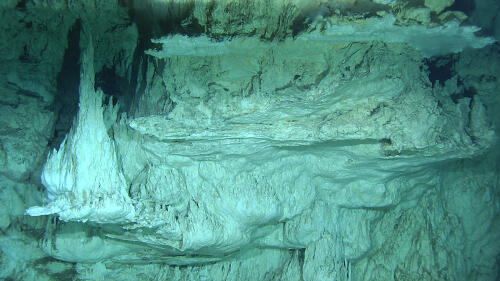Seafloor
When people hear about underwater reefs, they usually picture colorful gardens created from coral. But some reefs are anchored to much more unusual foundations. For more than a century, people have placed a wide assortment of objects on the seafloor off the U.S. coast to provide habitat for marine life and recreational opportunities for fishing and diving. Artificial reefs have been created from decommissioned ships, chicken transport cages, concrete pipes, rail cars and more. We study how ocean-dwelling fish use artificial reefs in the U.S. and beyond. Through our research, we have learned that artificial reefs can be hot spots for large predatory fish such as groupers and jacks. They also can serve as stepping stones for reef fish expanding their range northward with warming water temperatures and as rest stops for sharks. Artificial reefs can be strategically designed and placed to optimize fish habitat. But although they provide valuable ecological services, no one has in...
More than a quarter of the wild seafood that the world eats comes from the seafloor. Shrimp, skate, sole, cod and other creatures — mostly flat ones — that roam the bottom of the ocean get scooped up in huge nets. These nets, called bottom trawls, wrangle millions of tons of fish worth billions of dollars each year. But they also damage coral, sponges, starfish, worms, and other sand-dwellers as the nets scrape against the ocean bed. Environmentalists sometimes liken the practice to strip-mining or clear-cutting forests. According to a new study in the journal Frontiers in Marine Science, bottom trawling may be even worse than many people had thought. Dragging nets through the sand — which occurs over some 5 million square kilometers, a little over 1 percent of the ocean floor — isn’t just a threat to marine life. The study found that stirring up carbon-rich sediment on the seafloor releases some 370 million metric tons of planet-w...
Two miles below the ocean surface off Monterey, California, warm water percolates from the seafloor at the base of an underwater mountain. It’s a magical place, especially if you’re an octopus. In 2018, one of us, Amanda Kahn, was aboard the research vessel E/V Nautilus when scientists discovered the “Octopus Garden.” Thousands of pearl octopuses (Muusoctopus robustus) were curled up into individual balls in lines and clumps. As Nautilus Live streamed the expedition online, the world got to share the excitement of the discovery. We now know why these amazing creatures gather at this and other underwater warm springs. Scientists with the Monterey Bay Aquarium Research Institute take viewers on a journey to Davidson Seamount in a video narrated by Jim Barry, an author of this article. Credit: © MBARI. In a new study involving scientists from several fields, we explain why octopuses migrate to the Octopus Garden....


